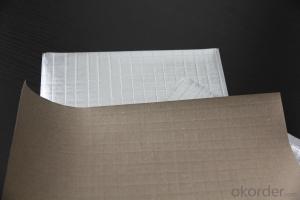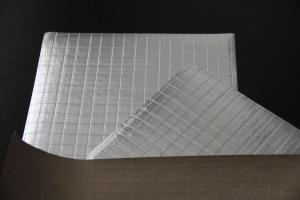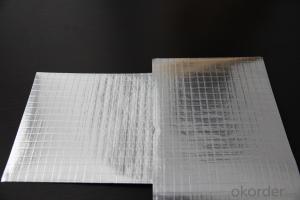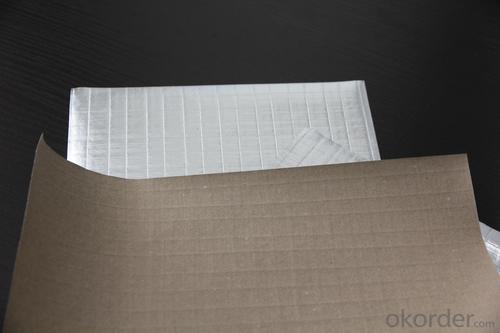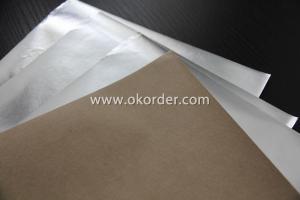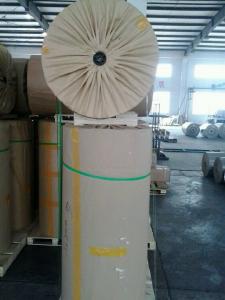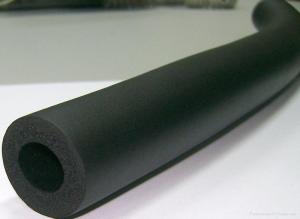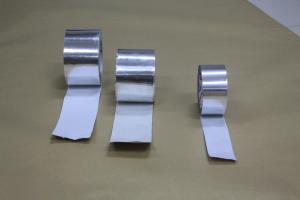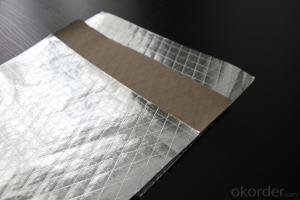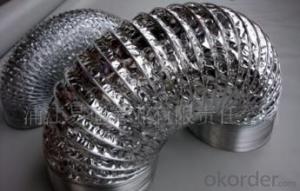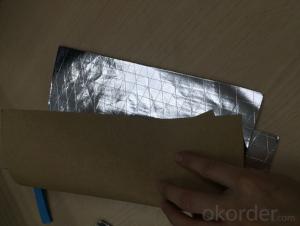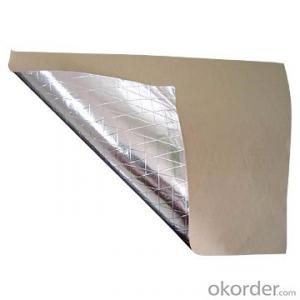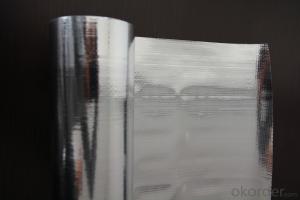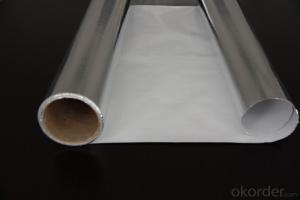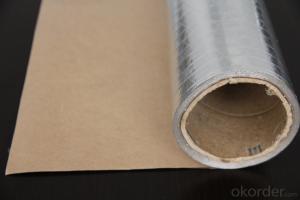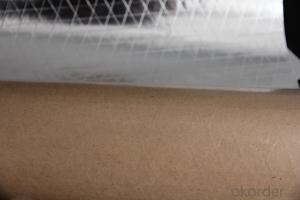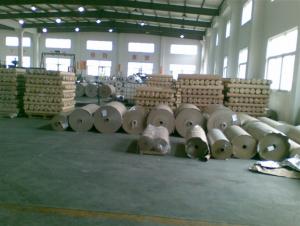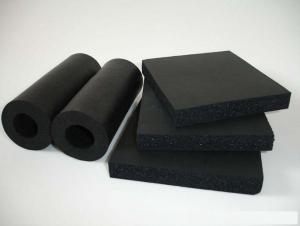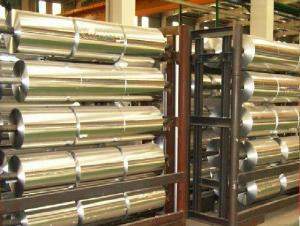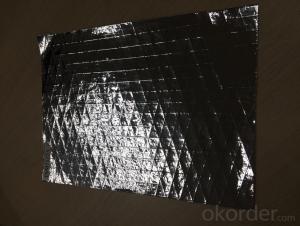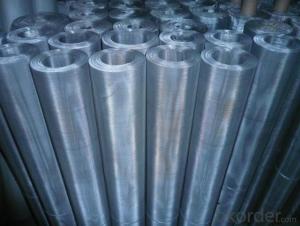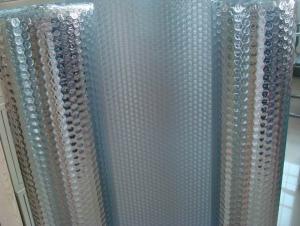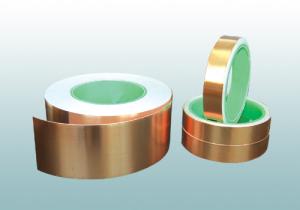Aluminum Foil Facing Single Sided Paper Foil
- Loading Port:
- China Main Port
- Payment Terms:
- TT or LC
- Min Order Qty:
- 5000 m²
- Supply Capability:
- 800000 m²/month
OKorder Service Pledge
OKorder Financial Service
You Might Also Like
Introduction of Aluminum Foil Facing-FSK
Aluminum Foil Facing is a kind of film, which is made of by Aluminum foil: 7 microns /Two-way fiberglass scrim: 12.5х12.5mm/Polyethylene
/Kraft paper: 60gsm (natural )
Application of Aluminum Foil Facing
Our aluminum foil facing are mainly used as facing for glass wool insulation, rockwool, mineral wool etc. Also aluminum foil facing is used under roof decking, under attic rafters, over existing attic thermal insulation, in floors, walls and crawl spaces, and in industrial and commercial buildings to block radiant heat coming into house through the roof during the summer and retain indoor heat generated during in winter
Advantage of Aluminum Foil Facing
Light weight
• High manufacturing accuracy
• High strength
• Small inertia resistance
• Strong heat dissipation ability
• Good visual effect
• High reflective insulation
• Heat resistant, water proof, stable at high temperature;
• environmentally friendly, no smell and not-toxic;
• Smooth and clear surface;
Packing of Aluminum Foil Facing
1. Waterproof paper then PVC shrinking Film
2. Kraft paper only
3. Woven cloth
4. Kraft paper or Water Proof Film then Metal/wooden pallet
5. (Also as your request. )
Pictures of Aluminum Foil Facing
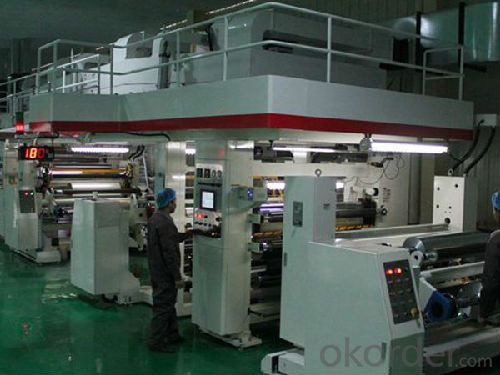
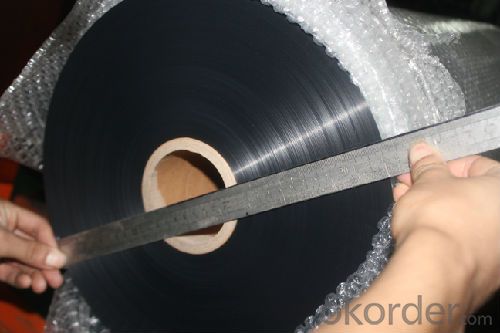
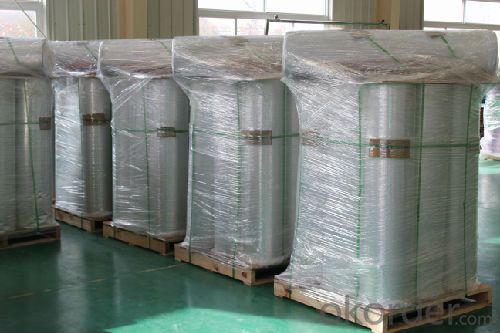
Specification of Aluminum Foil Facing
CONSTRUCTION:
Aluminum foil: 7 microns
Two-way fiberglass scrim: 12.5х12.5mm
Adhesive: Polyethylene
Kraft paper: 60gsm (natural )
TYPICAL PHYSICAL PROPERTIES:
PROPERTIES | UNIT | VALUE | TEST METHOD |
Basic weight | gsm | 98 | ASTM D646 |
Tensile strength: M. D. X. D. | N/25mm | 132 65 | ASTM D828 |
Burst strength | N | 30 | ASTM D774 |
Reflectivity of foil surface | % | 95 | ---------- |
Temp. Resistance | -29°C 66°C | No Delamination No Delamination | ASTM C1263 |
Water vapor permeance | ng/N.s | 1.15 | ASTM E-96 |
Remarks:
1. The data above are typical results and subject to change without notice.
2. Tolerance: Weight and Thickness: ±10%; Width: ±3mm;
Length: Cut Roll & Log Roll ±0.3m, Jumbo Roll ±0.5%.
3. The products should be stored at room temperature and kept from wet and heat source.
4. It is essential, as with all pressure-sensitive tapes, that the surface to which the tape is applied must be clean, dry, and free of grease and oil.
5. The user should take test and do trial-application on the above products before coming into application so as to witness and ensure suitability for user’s special purpose and technique.
FAQ
We have organized several common questions for our clients,may help you sincerely:
1. How about your company?
A world class manufacturer & supplier of Aluminum Foil Facing and is one of the large-scale professional investment Aluminum Foil Facing bases in China. Annually more than 1000 containers of Aluminum Foil Facing are exported to markets in Europe, America and Japan.
2. What is the storage condition?
The Aluminum Foil Facing should be stored at room temperature and kept from wet and heat source.
3. How to guarantee the quality of the products?
We have established the international advanced quality management system,every link from raw material to final product we have strict quality test;We resolutely put an end to unqualified products flowing into the market. At the same time, we will provide necessary follow-up service assurance.
4. How long can we receive the product after purchase?
In the purchase of product within four working days, we will arrange the factory delivery as soon as possible. The specific time of receiving is related to the state and position of customers. Commonly 7 to 10 working days can be served.
- Q: The user is asking if they can reuse their old aluminum foil facing to create new ones once it becomes worn out.
- <p>No, you cannot create new aluminum foil facings from old, worn-out ones. Aluminum foil facings are typically made from a specific type of aluminum that is bonded to a substrate. Once it wears out, the aluminum layer is compromised and cannot be reused to make new facings. Recycling old aluminum foil is the best option to reduce waste and conserve resources. You can recycle aluminum foil, which will then be processed and turned into new aluminum products.</p>
- Q: This question asks for instructions on how to clean aluminum foil facing after it has been used in cooking or baking.
- <p>To clean aluminum foil facing after use, first let it cool down to avoid burns. Then, gently scrape off any food residue with a spatula or the edge of a knife. For stubborn stains, mix a solution of warm water and dish soap, and wipe the surface with a soft cloth or sponge. Rinse with clean water and dry thoroughly. For baked-on food, you can use a plastic scraper or an old toothbrush to gently remove it. Avoid using abrasive materials that could scratch the surface. Regular cleaning will help maintain the integrity and appearance of your aluminum foil facing.</p>
- Q: What are the precautions to be aware of when using aluminum foil in the kitchen?
- <p>When using aluminum foil in the kitchen, it's important to avoid direct contact with acidic or alkaline foods as it may react and contaminate the food. Do not use it in broilers or ovens above 450掳F (232掳C), as it can melt and release harmful fumes. Avoid wrapping food in aluminum foil for extended periods, especially at high temperatures, as it may lead to the foil breaking down and leaching aluminum into the food. Always check for any tears or punctures in the foil to prevent food from coming into contact with the cooking surface directly.</p>
- Q: Is it safe and practical to use aluminum foil facing as a protective layer for a cutting board?
- <p>Yes, you can use aluminum foil facing as a temporary cover for a cutting board. It provides a smooth surface that can protect the cutting board from scratches and stains. However, it's not recommended for long-term use or heavy-duty cutting as it may tear or dent easily. For regular use, a proper cutting board cover or a plastic cutting mat is more durable and safer.</p>
- Q: What are the primary applications or purposes of aluminum foil facing in various industries or everyday life?
- <p>Aluminum foil facing is primarily used for its heat reflective properties, making it ideal for insulation in construction and roofing. It also serves as a moisture barrier and vapor barrier in walls and ceilings, helping to prevent mold and mildew. In the HVAC industry, it's used for duct insulation, enhancing energy efficiency. Additionally, it's utilized in packaging for food and pharmaceuticals to protect contents from light, air, and moisture, thus preserving freshness and quality.</p>
- Q: What are the most suitable materials for creating aluminum foil facing?
- <p>The best materials for making aluminum foil facing are typically aluminum alloys, specifically 1100, 3003, or 8011 series alloys. These alloys offer excellent formability, corrosion resistance, and reflectivity, which are crucial for applications like insulation, construction, and heat management. Additionally, the facing material often includes a layer of polyester or polyethylene film to enhance durability and prevent tearing. The choice of material can also depend on specific requirements such as temperature resistance, UV resistance, and environmental conditions.</p>
- Q: Is it possible to use aluminum foil with a shiny side as a non-stick surface for cooking purposes?
- <p>Yes, you can use aluminum foil facing as a non-stick surface for cooking. The shiny side of aluminum foil is often used to create a non-stick surface, which can be helpful when grilling or baking to prevent food from sticking to the pan or grill. However, it's important to use it properly to avoid any potential health risks. Ensure that the foil doesn't touch the heat source directly for extended periods, as this can cause the foil to break down and release aluminum into the food. It's also recommended to use heavy-duty aluminum foil for cooking to ensure it can withstand higher temperatures without puncturing or melting.</p>
- Q: What are some effective ways to use aluminum foil in the kitchen?
- <p>Using aluminum foil effectively in the kitchen can enhance cooking and cleaning. Here are some tips: 1. Line baking sheets to prevent food from sticking and to make cleanup easier. 2. Create a foil packet for cooking fish, vegetables, or meats to lock in flavors and moisture. 3. Use foil to cover dishes during baking to prevent over-browning, then remove it for the last few minutes to achieve a crispy top. 4. Create a makeshift roasting rack by folding foil to elevate meats for even cooking. 5. Use foil to wrap handles of hot pots and pans to prevent burns. 6. Polish cookware with crumpled foil and water to remove stains and scratches. 7. Use foil to create a seal when storing leftovers in containers to keep food fresh. Always handle with care and avoid using foil with acidic or alkaline foods as it can react with the foil.</p>
- Q: Is it safe to use aluminum foil facing inside a pressure cooker and does it pose any risks?
- <p>Using aluminum foil facing in a pressure cooker is generally safe and is commonly used to prevent food from sticking to the pot. However, it's important to ensure that the foil does not block the pressure release valve or the vent, as this could lead to a buildup of pressure and potentially cause the cooker to malfunction. Always follow the manufacturer's guidelines for your specific pressure cooker model to avoid any safety issues.</p>
- Q: This question asks for methods to clean the aluminum foil facing, which is a common household material used for cooking and food storage.
- <p>To clean aluminum foil facing, start by removing any visible debris. Use a damp cloth or sponge with mild dish soap to wipe the surface gently. Avoid abrasive materials that could scratch the foil. If there are stubborn stains, you can use a mixture of water and vinegar (1:1 ratio) to dampen the cloth. Wipe the surface and let it air dry. For baked-on food, you can use a plastic scraper or a soft nylon brush to gently remove it. Always remember to handle aluminum foil carefully to prevent tearing or damaging the surface.</p>
Send your message to us
Aluminum Foil Facing Single Sided Paper Foil
- Loading Port:
- China Main Port
- Payment Terms:
- TT or LC
- Min Order Qty:
- 5000 m²
- Supply Capability:
- 800000 m²/month
OKorder Service Pledge
OKorder Financial Service
Similar products
Hot products
Hot Searches
Related keywords
